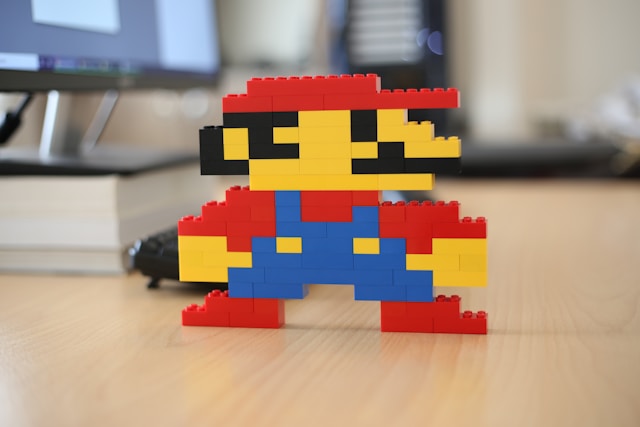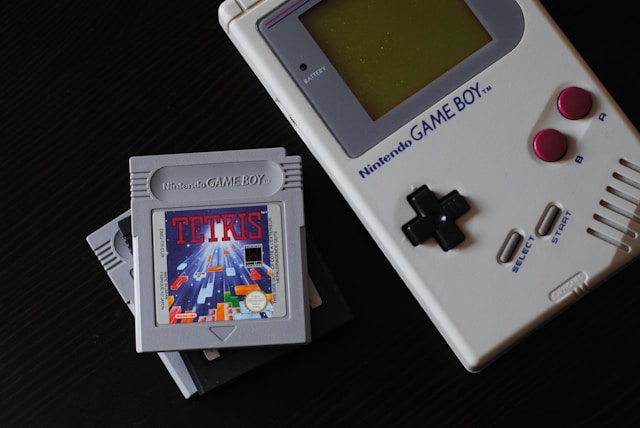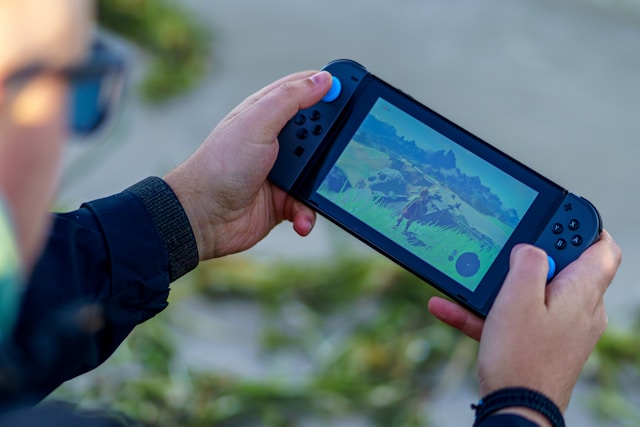Nintendo’s journey from a humble playing card company in Kyoto to a global entertainment powerhouse offers a wealth of insights for marketing professionals. Its storied history is punctuated by revolutionary products, innovative marketing campaigns, and a keen understanding of its audience. Nintendo’s ability to adapt and thrive in the ever-changing landscape of the video game industry is a testament to its sophisticated marketing strategies.
Understanding the Audience
Nintendo’s core strength lies in its deep understanding of its diverse audience. Unlike many of its competitors, Nintendo has consistently targeted a broad demographic, appealing to both casual and hardcore gamers, as well as children and adults. This inclusive approach is evident in the design and marketing of its products. For instance, the Wii, launched in 2006, was marketed not just as a gaming console but as a family entertainment system. Its motion-sensing technology appealed to a wide range of people, including those who might not typically play video games.
The company’s marketing campaigns often emphasize the joy and social aspects of gaming. The commercials for the Wii featured multi-generational families playing together, highlighting the console’s universal appeal. This strategy paid off handsomely, with the Wii becoming one of the best-selling consoles of all time.

The Power of Nostalgia
Nintendo has masterfully leveraged nostalgia in its marketing. By tapping into the fond memories many have of playing Nintendo games in their youth, the company has cultivated a loyal fanbase. This nostalgia-driven marketing is evident in the success of products like the NES Classic Edition and the SNES Classic Edition. These mini-consoles, which come pre-loaded with classic games, sold out almost immediately upon release.
The marketing campaigns for these products were a blend of modern and retro elements. Commercials and online content often featured iconic characters like Mario and Link, set against the backdrop of the original 8-bit and 16-bit graphics. This not only appealed to older gamers but also introduced a new generation to Nintendo’s classic titles.
Innovative Product Launches
Nintendo’s product launch strategies are meticulously planned and executed, often creating significant buzz and anticipation. The launch of the Nintendo Switch in 2017 is a prime example. Prior to its release, Nintendo teased the concept of a hybrid console that could be used both at home and on the go. This innovative concept generated considerable excitement and speculation within the gaming community.
The reveal of the Switch was a masterclass in marketing. The initial teaser video showcased the versatility of the console, demonstrating how it could seamlessly transition from a home console to a portable device. The video highlighted various use cases, from playing at home to multiplayer gaming on the go, appealing to different segments of the gaming market.
To sustain the momentum, Nintendo used a multi-faceted marketing approach, including high-profile events like the Nintendo Switch Presentation and extensive hands-on demos for media and influencers. This comprehensive strategy ensured widespread coverage and built significant anticipation leading up to the launch.

Engaging Content and Community Building
Nintendo has always placed a strong emphasis on creating engaging content and fostering a sense of community among its fans. The company’s marketing efforts extend beyond traditional advertising, incorporating digital content, social media engagement, and fan interactions.
One of the standout examples of this approach is the Nintendo Direct series. Launched in 2011, Nintendo Direct is a series of online presentations that provide updates on upcoming games and products directly to fans. This direct-to-consumer approach bypasses traditional media channels and allows Nintendo to control the narrative. The presentations are often packed with exclusive content, surprise announcements, and behind-the-scenes insights, making them highly anticipated events within the gaming community.
Additionally, Nintendo has effectively utilized social media platforms to engage with its audience. The company’s Twitter accounts, for instance, are known for their playful and interactive posts. By engaging directly with fans, Nintendo has built a strong online community that feels personally connected to the brand.
Strategic Partnerships and Collaborations
Collaborations and strategic partnerships have been integral to Nintendo’s marketing strategy. The company has formed alliances with various brands and franchises to expand its reach and create unique marketing opportunities.
One notable collaboration is with The Pokémon Company. Although technically a separate entity, The Pokémon Company is closely associated with Nintendo, and their collaborative efforts have resulted in one of the most successful franchises in the world. The release of Pokémon GO in 2016 is a standout example. The augmented reality game, developed by Niantic in collaboration with Nintendo and The Pokémon Company, became a global phenomenon. Its marketing campaign focused on the innovative gameplay and the nostalgic appeal of Pokémon, resulting in widespread media coverage and unprecedented user engagement.
Another significant partnership was with Universal Studios to create Super Nintendo World, a themed area within Universal’s theme parks. The marketing for Super Nintendo World has been a blend of traditional advertising, influencer partnerships, and experiential marketing. The immersive experience allows fans to step into the world of their favorite Nintendo games, creating a strong emotional connection to the brand.

Embracing Digital and Experiential Marketing
In recent years, Nintendo has increasingly embraced digital and experiential marketing to connect with its audience. The company’s presence at major gaming conventions like E3 and Gamescom has been marked by elaborate booths and engaging presentations. These events are not just about showcasing new products but also about creating memorable experiences for attendees.
Nintendo’s experiential marketing extends to special events and pop-up experiences. For example, the Nintendo Switch launch was accompanied by a series of pop-up events across major cities, where fans could try out the new console and games. These hands-on experiences generated significant buzz and provided valuable feedback that informed subsequent marketing efforts.
Digital marketing campaigns have also played a crucial role. Nintendo has effectively used online platforms to reach a global audience. The marketing for Animal Crossing: New Horizons, released in 2020, is a case in point. The game’s social media campaign highlighted its relaxing gameplay and customization features, resonating with a broad audience, especially during the early months of the COVID-19 pandemic. User-generated content, such as players sharing their in-game creations on social media, further amplified the campaign’s reach.
Adaptation and Innovation
Nintendo’s ability to adapt and innovate has been crucial to its sustained success. The company has not shied away from taking risks and exploring new avenues. The transition from traditional cartridges to optical discs with the GameCube, the introduction of motion controls with the Wii, and the hybrid nature of the Switch are all examples of Nintendo’s willingness to innovate.
The marketing strategies for these innovations have been equally forward-thinking. Nintendo has consistently highlighted the unique features of its products, differentiating them from competitors. The marketing for the Wii, for instance, focused on the revolutionary motion controls, while the Switch’s marketing emphasized its versatility.
Moreover, Nintendo has shown a keen understanding of market trends and consumer preferences. The company’s foray into mobile gaming with titles like Super Mario Run and Fire Emblem Heroes demonstrates its willingness to expand beyond traditional consoles. These mobile games have been marketed to both longtime fans and new players, leveraging familiar characters and gameplay mechanics in a new format.
Lessons for Marketing Professionals
Nintendo’s marketing success offers several valuable lessons for marketing professionals:
- Know Your Audience: Nintendo’s deep understanding of its diverse audience allows it to create targeted and effective marketing campaigns. Tailoring messages to resonate with different segments is crucial for broad appeal.
- Leverage Nostalgia: Nostalgia can be a powerful tool in marketing. By tapping into fond memories and iconic characters, brands can create a strong emotional connection with their audience.
- Innovative Product Launches: Generating buzz and anticipation through well-planned product launches can significantly impact a product’s success. Highlighting unique features and creating memorable experiences are key elements.
- Engaging Content: Direct communication with consumers through engaging content, such as Nintendo Direct, can build strong brand loyalty and community.
- Strategic Partnerships: Collaborations can expand a brand’s reach and create unique marketing opportunities. Partnering with complementary brands can enhance the overall campaign impact.
- Embrace Digital and Experiential Marketing: Combining digital strategies with hands-on experiences can create a comprehensive and immersive marketing campaign. Leveraging social media and user-generated content can amplify reach and engagement.
- Adaptation and Innovation: Staying ahead of market trends and being willing to innovate can keep a brand relevant and competitive. Continuous adaptation to consumer preferences and technological advancements is essential.
Nintendo’s marketing strategy is a blend of tradition and innovation, nostalgia and forward-thinking. Its ability to understand and connect with its audience, create engaging content, and leverage strategic partnerships has cemented its position as a leader in the entertainment industry. For marketing professionals, Nintendo’s success story is a rich source of inspiration and insight, offering valuable lessons on how to build and sustain a beloved brand in a competitive market. As the company continues to evolve and innovate, its marketing strategies will undoubtedly continue to offer valuable insights for years to come.

